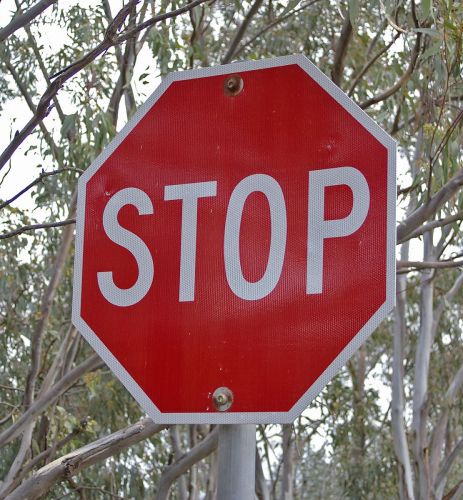By Walt Seifert
Editor's note: Walt Seifert is executive director of Sacramento Trailnet, a nonprofit association promoting greenways with a paved trail network in Sacramento, California.
For 35 years, people riding bikes in Idaho have been allowed to do something they can't legally do just about anywhere else—treat stop signs as yields. After determining it is safe to do so, bicyclists in Boise can coast through stops without losing momentum or their balance. Until June 2017, Idaho was the sole state that permitted this behavior. It's been joined by Delaware through a bill passed in June (not yet signed by the governor).
Is California next to change the law? An unusual bipartisan bike bill (AB 1103) would permit the "Idaho stop" in the Golden State. Idaho and Delaware are fine states, but California is the nation's most populous and arguably most influential. A change in California would create a powerful precedent for reform across the country.
Other states have tried, but failed, to enact similar legislation. Oregon, Arizona, Colorado, Minnesota, Arkansas, Utah, Oklahoma, and Montana all have made attempts. That's an indication that rolling through stops is not confined to Idaho, Delaware or California. It's also not rare behavior. A DePaul University study done in Chicago found that 96 percent of bike riders didn't come to a stop. Millions of times a day across the U.S., riders treat stops as yields—without catastrophic results. In Idaho, injury collisions actually decreased after it changed the law and have remained at low levels since.
The California bill's proponents cite a litany of benefits. Existing law is less safe for bike riders. It increases bike riders' exposure time to cross traffic. It impedes traffic flow by making everyone wait. Current law, if followed, makes trips by bike more arduous and less convenient, and so less likely. Coming to a complete stop instead of coasting through stops requires expending 25 percent more energy.
Current stop sign law makes most bike riders scofflaws even though safely yielding creates no harm to others. While current law is rarely enforced, it is subject to arbitrary or unreasonable enforcement, including allowing racial profiling. In California, fines for riders on 20 pound bikes are the same as for motorists in two ton SUVs, though the danger created is far less.
The California bill faces serious opposition. Despite the decades of positive experience in Idaho, the Police Chiefs Association, AAA, Teamsters, and members of the disability community all worry about a different outcome in California. They argue interactions at intersections need to be predictable, not based on subjective decisions by bicyclists. Blind pedestrians recount close calls with bicyclists and worry about getting creamed by a rider blowing through an intersection. Even some bicyclists object to "special privileges" for bicyclists, citing the "Same roads, same rules, same rights" mantra.
There are counterarguments. Yielding is far different than blowing through stops. Yield signs are used around the world and are well understood. Motorists make subjective judgments every day: whether it is safe to pass on a two-lane highway, if there is enough time to turn left in front of an oncoming vehicle, or what is a safe speed in bad weather.
Having more bike riders, and fewer vehicles, would make pedestrians safer, not less safe. And maybe more bike riders would stay off sidewalks and out of the pedestrian realm if they felt streets were more welcoming.
There are already different laws for different road users based on physical and operational characteristics, such as different speed and weight limits for trucks and bus or bike only lanes. Some differences in traffic law are based entirely on environmental concerns. HOV lanes may be used by specific vehicles—those with passengers and, in some states, those powered by alternative fuels.
Bicycling should be encouraged precisely because it is different — better for the environment and public health. Bike riders are also uniquely able to judge conditions at intersections and to react because of their low approach speeds, position at the front of their "vehicle," unobstructed vision, unimpeded ability to hear, and ability to stop quickly.
The League of American Bicyclists neither opposes nor supports states or cities adopting stop as yield laws. The League's policy director, Ken McLeod, said, "The limited data we have from Idaho suggests that the law is beneficial for bicycling, but more data would help inform the debate." The LAB website notes, "...laws that make cycling easier without having a quantifiable downside should be an easy sell."
Alex Logemann, the policy director at PeopleForBikes, said the group has no official stance either. His organization favors "rules that create predictability. It's a safer environment if everyone knows what everyone else is doing." He offered it would be "good if more states experiment."
The California Bicycle Coalition fully supports the bill. Executive Director Dave Snyder said, "It makes sense to let traffic flow, make bike riding safer and easier, and lift a cloud of illegality from something that virtually everyone does without a problem."
Bike shop owners and industry members who feel California's "stop as yield" legislation would result in more (and guilt-free) customers and a more favorable societal view of bicycling can support the bill by signing the petition or sending the letter at the Calbike website.


